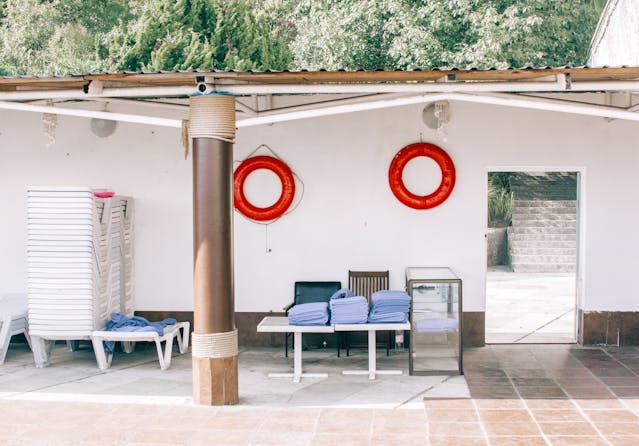Challenges of Sloped Yards
Sloped yards present unique difficulties that can hinder landscaping efforts. Common challenges include:
- Soil Erosion:Water runoff can wash away soil, damaging plants and destabilizing the landscape.
- Limited Usable Space:The incline often reduces flat areas for patios, gardens, or seating.
- Drainage Problems:Poor drainage can lead to water pooling at the base of the slope, potentially damaging structures or creating muddy conditions.
- Difficult Maintenance:Mowing, planting, and general upkeep become more labor-intensive on uneven terrain.
Fortunately, with proper planning and smart landscaping techniques, these issues can be effectively managed.
Key Solutions for Hillside Landscaping
Erosion Control Strategies
Preventing soil erosion is crucial for hillside landscaping. Consider these effective solutions:
- Ground Cover Plants:Fast-growing ground covers like creeping thyme or vinca minor create dense root systems that stabilize soil while enhancing the landscape’s visual appeal.
- Terraces:Building terraces on sloped areas can create flat planting zones that minimize runoff and maximize usable space. Incorporating retaining walls into terrace designs enhances stability while improving aesthetics.
Retaining Walls for Stability
Retaining walls are essential for stabilizing steep slopes and creating tiered garden spaces. By holding back soil, they prevent erosion and provide structure for flower beds or patios. For enhanced visual impact, explore creative retaining wall designs such as:
- Natural Stone Walls:Blending seamlessly with the landscape, stone walls offer timeless appeal and durability.
- Concrete Block Walls:These walls provide strength and flexibility, making them ideal for taller structures or complex designs.
- Wood Retaining Walls:Treated timber offers a rustic charm and is effective for low-to-medium-height retaining walls.
For more tailored solutions, you can explore creative retaining wall ideas from Sequoia Outdoor, the best landscaping company in the Bay Area, known for its innovative and functional designs.
Read Also : What is Redandwhitemagz .com? A Complete Guide to the Dynamic Digital Platform
Drainage Systems to Prevent Water Damage
Proper drainage is vital in sloped yards to direct excess water away from your property. Effective options include:
- French Drains:These underground systems use gravel and perforated pipes to channel water safely.
- Dry Creek Beds:Decorative rock channels not only guide water flow but also add aesthetic value.
- Rain Gardens:These strategically placed gardens collect and filter runoff, preventing soil erosion.
Native Plants for Low Maintenance
Incorporating native plants is a smart choice for hillside landscaping. Drought-tolerant and naturally adapted to the Bay Area climate, native plants require minimal maintenance while thriving in sloped environments. Popular options include:
- California poppies
- Manzanita
- Deer grass
- Yarrow
These plants develop deep root systems that stabilize the soil, enhancing erosion control.
Hardscaping for Functional Spaces
Hardscaping elements can turn challenging slopes into attractive, usable spaces. Consider adding:
- Stone Pathways:Create safe, stable walkways that enhance navigation.
- Steps and Staircases:Incorporate stone or wooden steps to improve access between tiers.
- Patios and Seating Areas:Level off sections of your yard to create inviting outdoor spaces for relaxation or entertainment.
Maintenance Tips
Maintaining a sloped yard requires thoughtful planning and consistent care. Here are some key tips:
- Regularly inspect retaining walls for signs of cracks or soil movement.
- Trim ground cover and native plants to promote healthy growth and prevent overgrowth.
- Keep drainage systems clear of debris to ensure proper water flow.
- Apply mulch to planting areas to reduce erosion and retain moisture.
Read More : Blogsternation .com – Blogging platform for Latest Tech Insights
Conclusion
While sloped yards and hillsides present unique challenges, the right landscaping strategies can transform these spaces into functional and visually appealing environments. By incorporating effective solutions like retaining walls, erosion control plants, and proper drainage, you can create a stable and inviting outdoor retreat.



